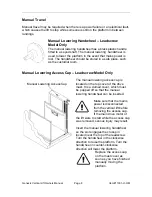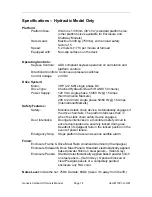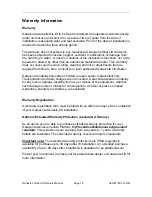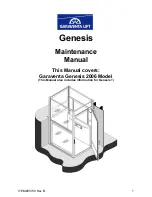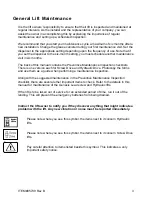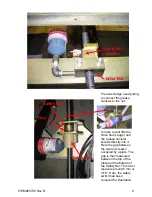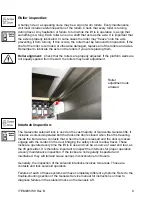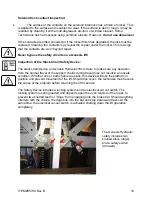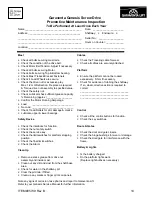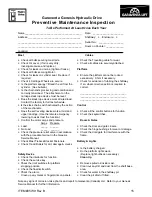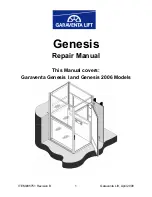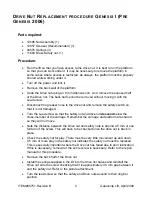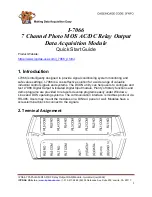
ITEM #05739 Rev B
4
Critical Maintenance procedures
Genesis Leadscrew and Hydraulic lifts:
General:
Any maintenance carried out on a Genesis lifts must be part of an on-going program.
The Genesis, like all elevating equipment, requires continuous maintenance inspections
to prevent serious risk of injury to lift users. The items listed here are only part of the
overall maintenance requirements. Please also see the maintenance checklists, and the
following Technical bulletins:
2000-001-00, 2000-007-00, 2001-011-00, 2002-003-00, and 2002-004-00, 2007-003-00
Leadscrew inspection:
The leadscrew on the Genesis lift is a critical structural component of the lift and as
such it requires regular inspection and maintenance. Indications of problems are fairly
easy to identify.
Squealing noise while running.
This is often the first indication of a poorly maintained
lift. If this noise is heard, it is very distinctive and must be corrected immediately. A dry
screw is the most common cause. If the screw has been running dry, this may then lead
to excessive wear on the Drive and/or the Safety Nuts. See further for important
inspection procedures for these components.
Rust on the leadscrew:
This is a serious sign of neglect. This is especially true if the rust can be seen in the
travel area of the screw. If you see this, you must assume that the Leadscrew, as well
as the Drive and Safety Nuts MUST BE REPLACED. Do not risk running a lift that has a
rusted leadscrew.
If the rust is only found in the unused areas of the screw, inspect the surfaces of the
travel area. If the thread surfaces look shiny, then check for the presence of grease on
the screw. Hold a piece of tissue or kitchen towel against the screw. Grease will be
deposited on the paper in lines corresponding to the threads. This is a good sign that
the screw is lubricated. Apply further grease to the screw and proceed with the
inspection.
Check the untraveled area of the screw. Look for flaking or other signs that the screw is
corroded. Surface rust is not necessarily a sign of a damaged screw. However, if there
is any sign that the corrosion has gone too far, replace the screw. Always replace the
Drive and Safety Nuts when replacing a leadscrew on a Genesis. Signs of serious
corrosion to a leadscrew include, severe rust build up, flaking or pitting on the thread
surfaces.
Always apply large amounts of grease to the traveled AND untraveled areas of the
leadscrew. This will protect against further corrosion.



